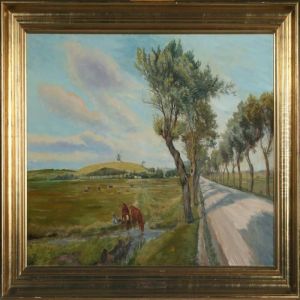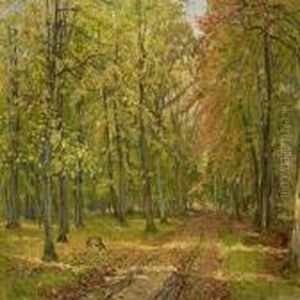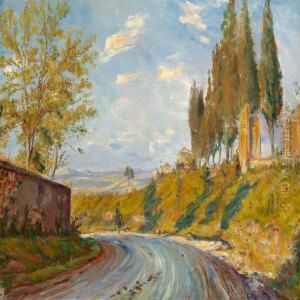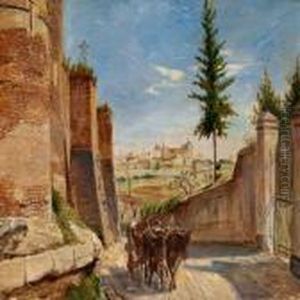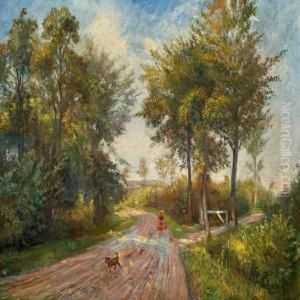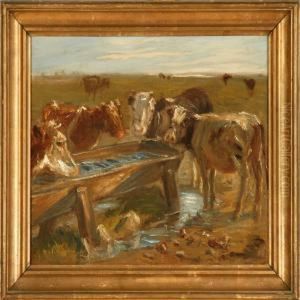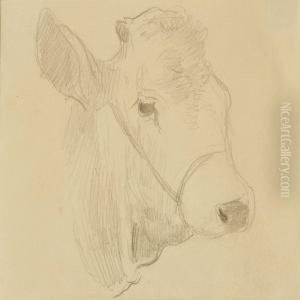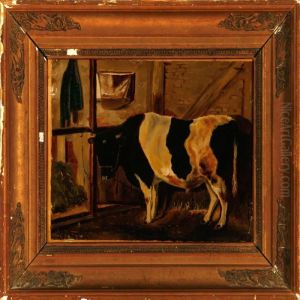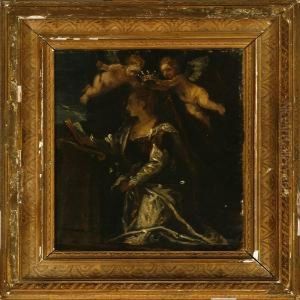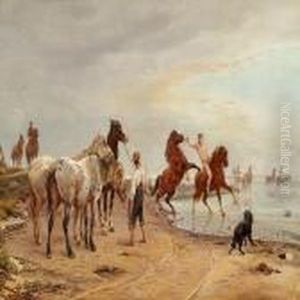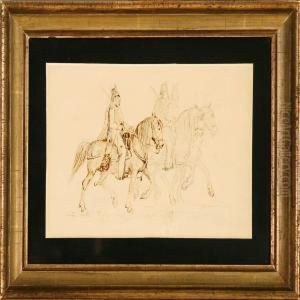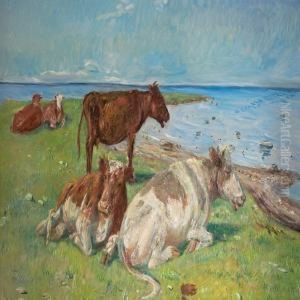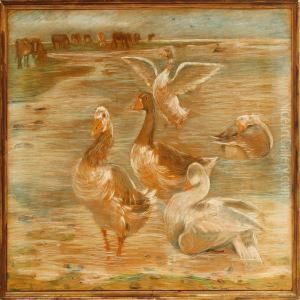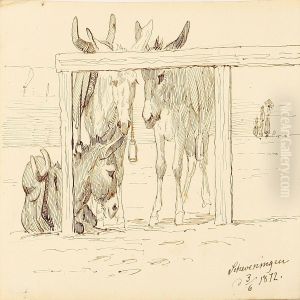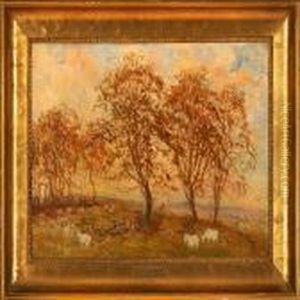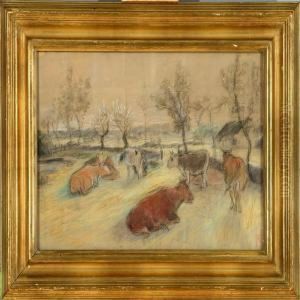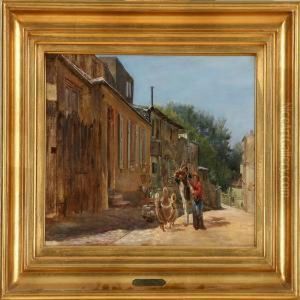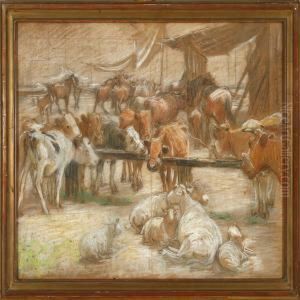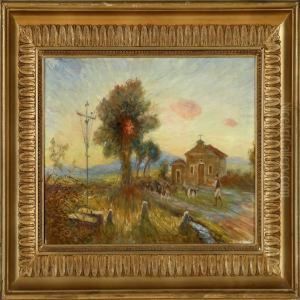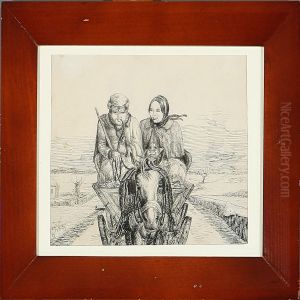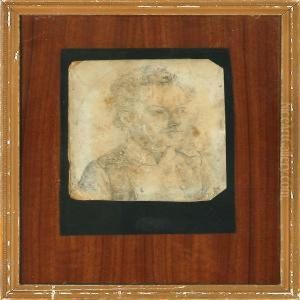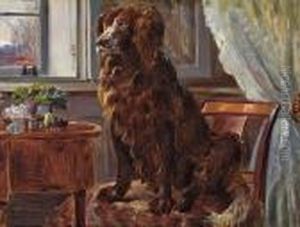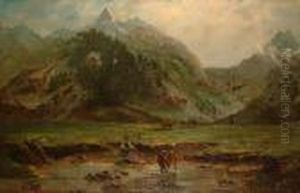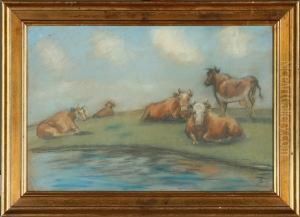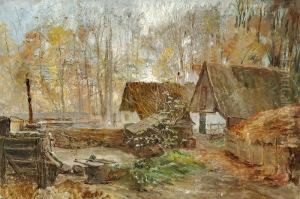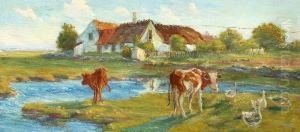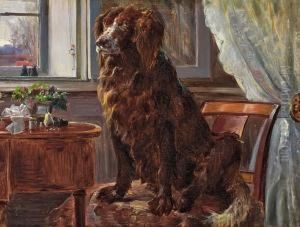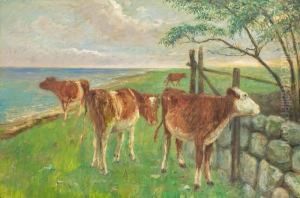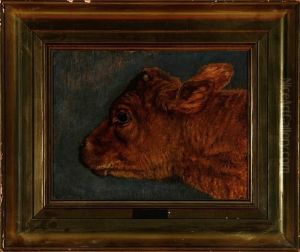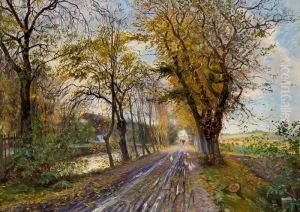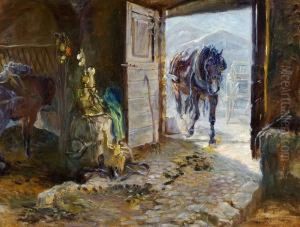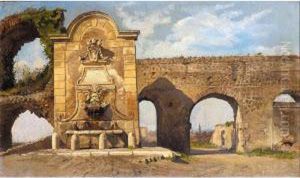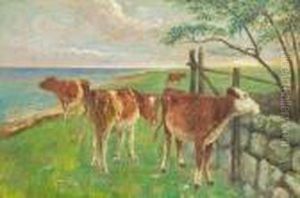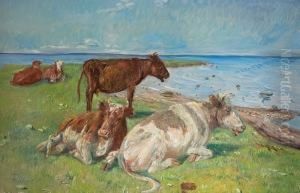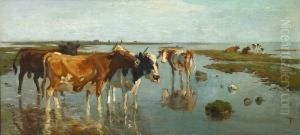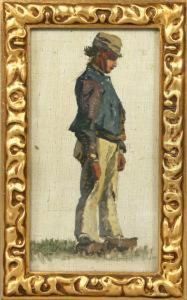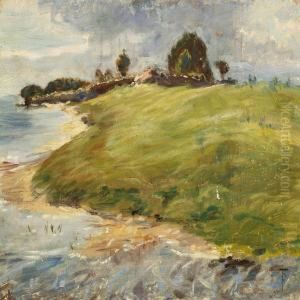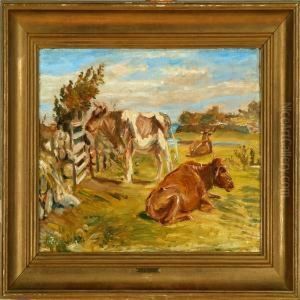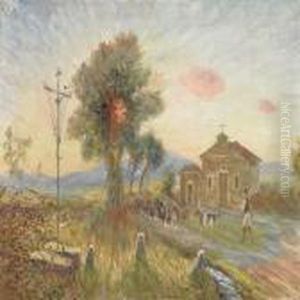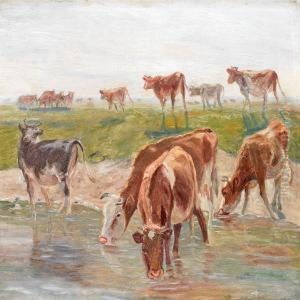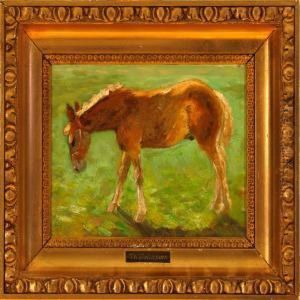Theodore Esbern Philipsen Paintings
Theodore Esbern Philipsen was a Danish painter born on June 10, 1840, in Copenhagen, Denmark. He is best known for his landscapes and animal paintings, particularly of the Danish island of Saltholm. Philipsen was associated with the Copenhagen School of painting and was influenced by the French Impressionists, whose work he encountered during his travels to Paris.
Philipsen's artistic journey began at the Royal Danish Academy of Fine Arts, where he studied from 1856 to 1866. However, he found the Academy's teaching too rigid and traditional, which led him to seek inspiration elsewhere. He developed an interest in the naturalistic depiction of animals and landscapes, which became central themes in his work.
During the 1870s, Philipsen was particularly influenced by the Barbizon School's approach to painting, which emphasized the beauty of the natural world captured through direct observation. This influence is evident in his pastoral scenes and his nuanced treatment of light and atmosphere.
Philipsen's work evolved further after his exposure to Impressionism. He began to adopt a freer brushwork and a brighter palette, which allowed him to capture the fleeting effects of light on the landscape with greater immediacy. Despite his stylistic evolution, Philipsen never fully embraced Impressionism, and his work retained a distinctly personal and contemplative character.
Philipsen's dedication to painting en plein air (outdoors) throughout the different seasons contributed to his deep understanding of nature's changing moods. His paintings of Saltholm, where he spent many summers, are particularly celebrated for their serene beauty and subtle interplay of light and color.
Throughout his career, Philipsen struggled with financial difficulties and received limited recognition. However, his work has been reassessed in recent years, and he is now regarded as an important figure in Danish art history for his unique contribution to landscape and animal painting.
Theodore Esbern Philipsen continued to paint until his death on December 3, 1920. His legacy includes a rich body of work that captures the essence of the Danish countryside and stands as a testament to his lifelong passion for the natural world.
